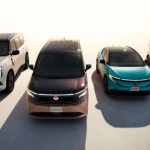India’s auto component industry has been one of the strongest pillars supporting the country’s automobile sector. As we progress through 2025, this segment is not just growing—it’s accelerating at an unprecedented pace. Fuelled by global demand, technology adoption, supportive government policies, and increasing competitiveness, India is carving out a prominent spot on the global auto components map.
A Sector on the Rise
The Indian auto component industry has witnessed steady growth over the past decade, but recent years have seen it shift into a higher gear. According to the Automotive Component Manufacturers Association of India (ACMA), exports grew significantly in FY2023–24, and early projections for 2025 indicate even stronger numbers. The sector exported components worth over USD 23 billion in FY24, and analysts predict this figure could cross USD 25 billion by the end of 2025.

What’s driving this surge? A combination of global supply chain diversification, rising global vehicle production, and India’s increasing reputation as a reliable manufacturing hub.
Global Supply Chain Shifts: India’s Moment to Shine
The global automotive supply chain is undergoing a transformation. Factors such as the COVID-19 pandemic, geopolitical tensions (including U.S.-China trade relations), and supply chain disruptions have pushed automakers to rethink their sourcing strategies. This has presented an opportunity for India to emerge as a “China Plus One” destination.
Indian suppliers are increasingly being seen as reliable partners, offering competitive costs, quality manufacturing, and adherence to global standards. As Original Equipment Manufacturers (OEMs) look to diversify their supplier base, India is becoming the go-to choice for sourcing not just low-cost parts but high-value, precision-engineered components.
Diversification in Export Destinations
While the United States and European Union remain major markets for Indian auto components, diversification is evident. Exports to Latin America, Africa, and Southeast Asia have seen double-digit growth in recent years. This geographic spread makes India’s auto component sector more resilient to global shocks and aligns with India’s broader vision of expanding trade ties across emerging markets.
Electric Vehicles: A New Avenue for Growth
2025 is also shaping up to be a pivotal year for India’s auto components industry in the electric vehicle (EV) space. As EV adoption rises globally, there is a growing need for specialized components such as battery management systems, power electronics, and lightweight materials.
Indian firms have begun investing in R&D and setting up manufacturing lines for EV components, tapping into new export opportunities. With domestic EV production also picking up speed, there is a dual benefit: economies of scale for local manufacturers and enhanced competitiveness for exports.
Government Support and Policy Tailwinds
The Indian government has been instrumental in supporting this sector’s growth. Initiatives like the Production Linked Incentive (PLI) Scheme for Auto Components, Make in India, and Export Promotion Capital Goods (EPCG) scheme have provided both financial incentives and policy clarity.
Moreover, Free Trade Agreements (FTAs) under negotiation or revision with markets like the EU, UK, and Australia could further reduce barriers for Indian exports. As trade access improves, so does the ability of Indian companies to compete globally on a level playing field.
Quality, Innovation, and Digitization
Another key reason behind the export surge is the improvement in quality and innovation by Indian suppliers. Many Tier-1 and Tier-2 component manufacturers are now certified to global quality standards such as ISO/TS 16949 and are investing heavily in digitization, automation, and smart manufacturing.
Indian firms are no longer just contract manufacturers; they are co-developing products with OEMs, using advanced materials and data-driven design tools. This move up the value chain is helping India not just export more, but export better.
Challenges on the Road Ahead
While the growth story is strong, there are challenges that could affect the sector’s trajectory. Supply chain costs, skilled labor shortages, and rising input prices (especially for raw materials like steel and aluminum) are ongoing concerns. Additionally, geopolitical tensions, currency fluctuations, and trade barriers in certain markets could act as speed bumps.
However, industry stakeholders are proactively addressing these challenges through skill development programs, digital transformation, and strategic global partnerships.

The Road Ahead: A Bright Future
India’s auto component exports are poised to reach new milestones in 2025 and beyond. With the global automotive industry undergoing a transformation—driven by electrification, digitalization, and sustainability—India has the capability and momentum to be at the forefront of this change.
As the world looks for resilient, cost-effective, and high-quality suppliers, India’s auto component manufacturers are stepping up to the challenge. Backed by policy support, rising global demand, and an expanding domestic EV ecosystem, the industry is not just catching up—it’s leading in many respects.
Conclusion
India’s auto component exports are indeed in the fast lane. With continued focus on innovation, quality, and global collaboration, the sector is set to play a pivotal role in both India’s economic growth and the global automotive supply chain. The road ahead may have a few bumps, but the destination is clearly one of sustained success and global leadership.

Hello, my name is Muskan Kumari and I am an experienced Digital Marketer. I have been blogging for the last 3 years and I have special interest in SEO. Here I give you easy bikes and writes easy-to-understand reviews and news about the latest bikes, helping readers choose the best options.. My aim is to always provide you with accurate, new and useful information.










